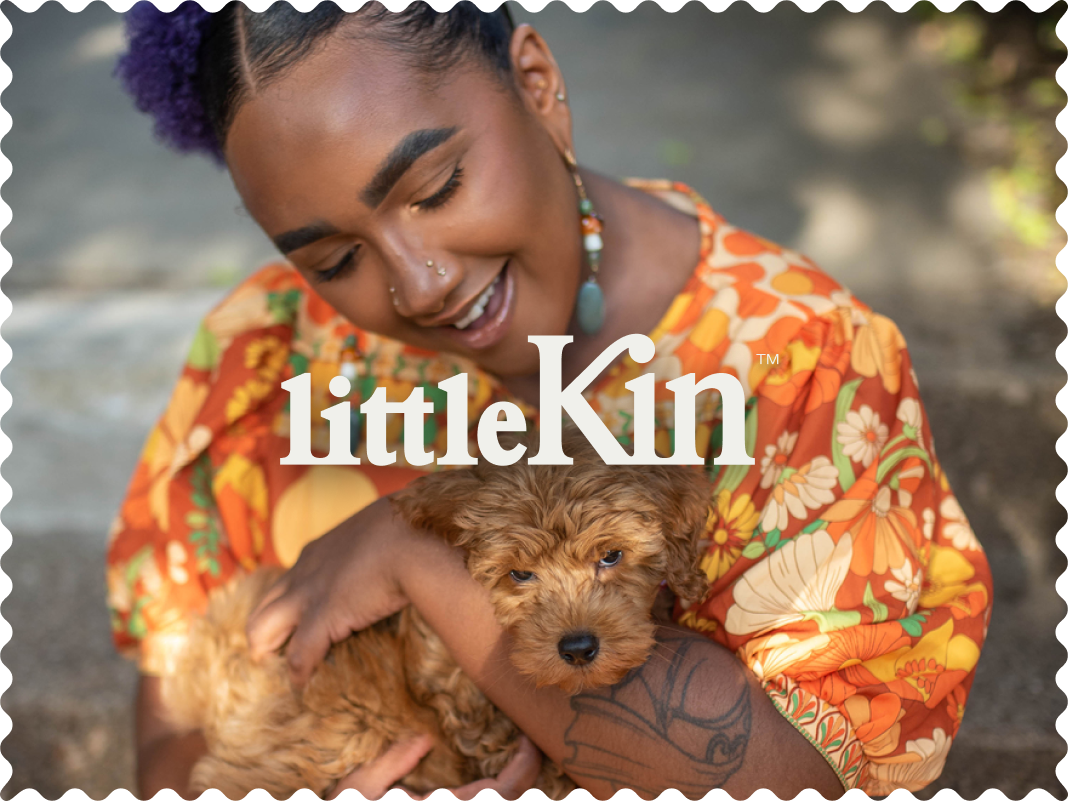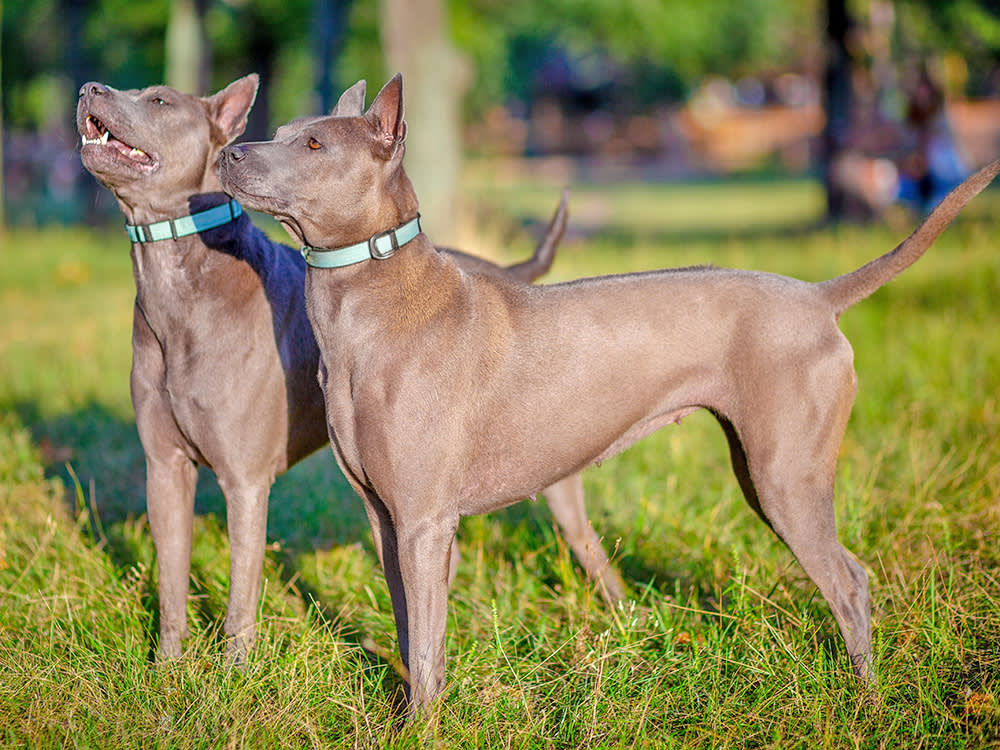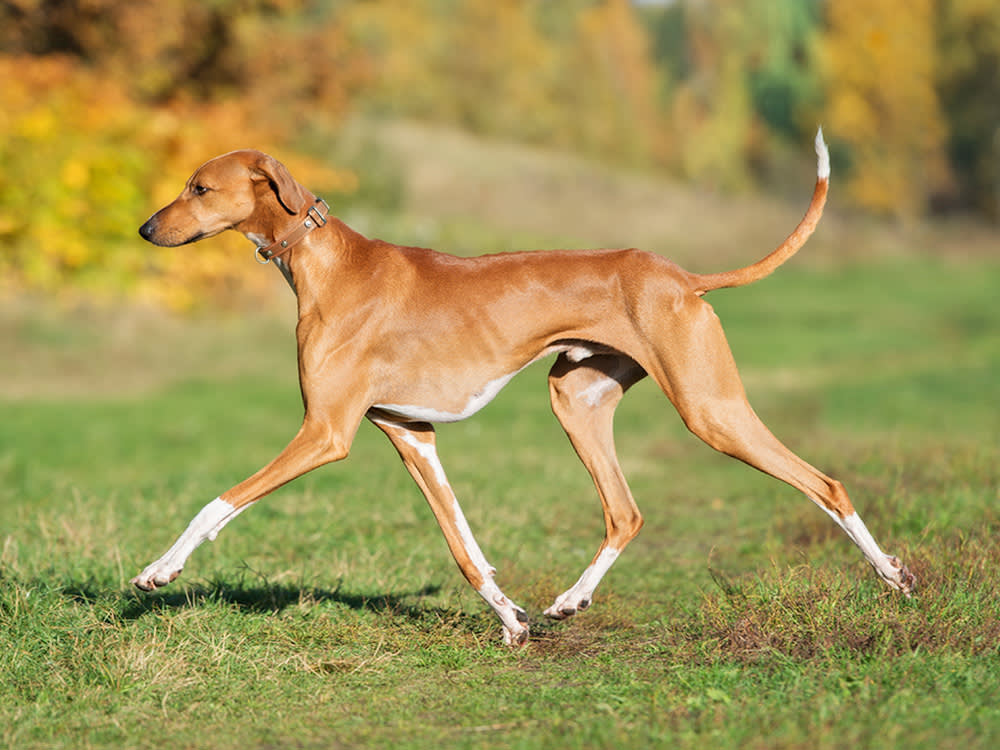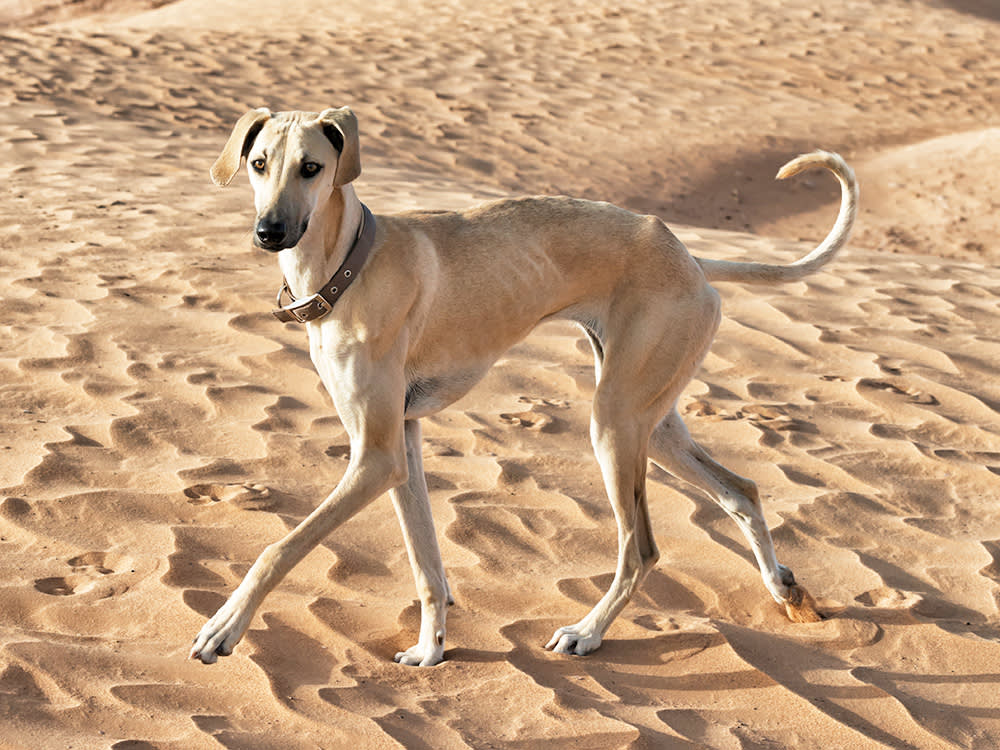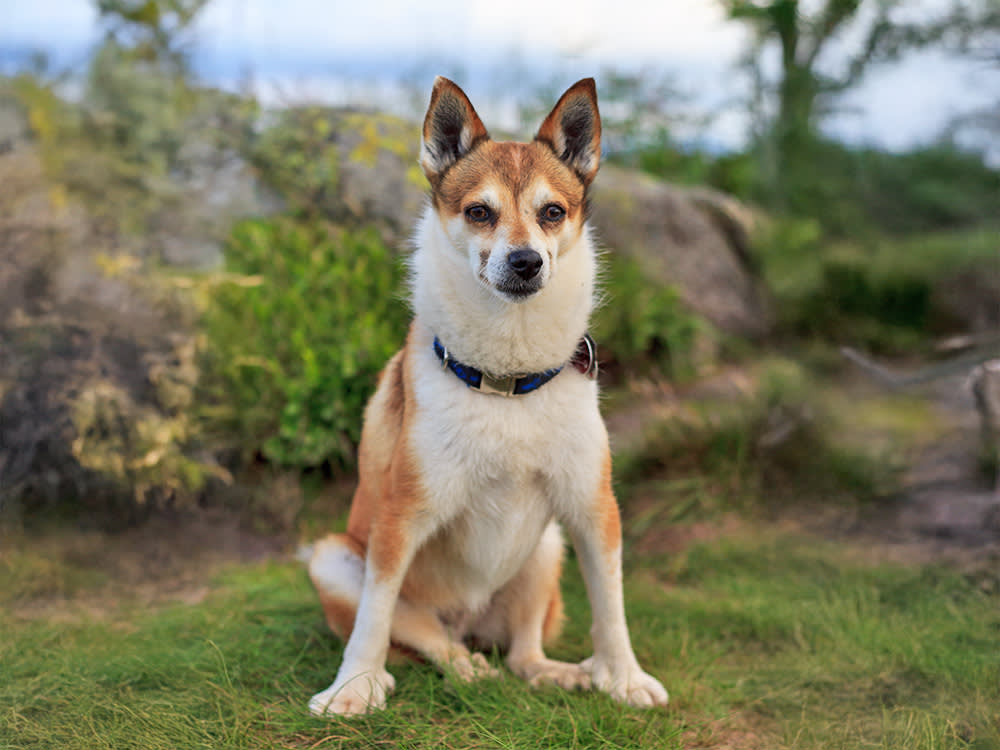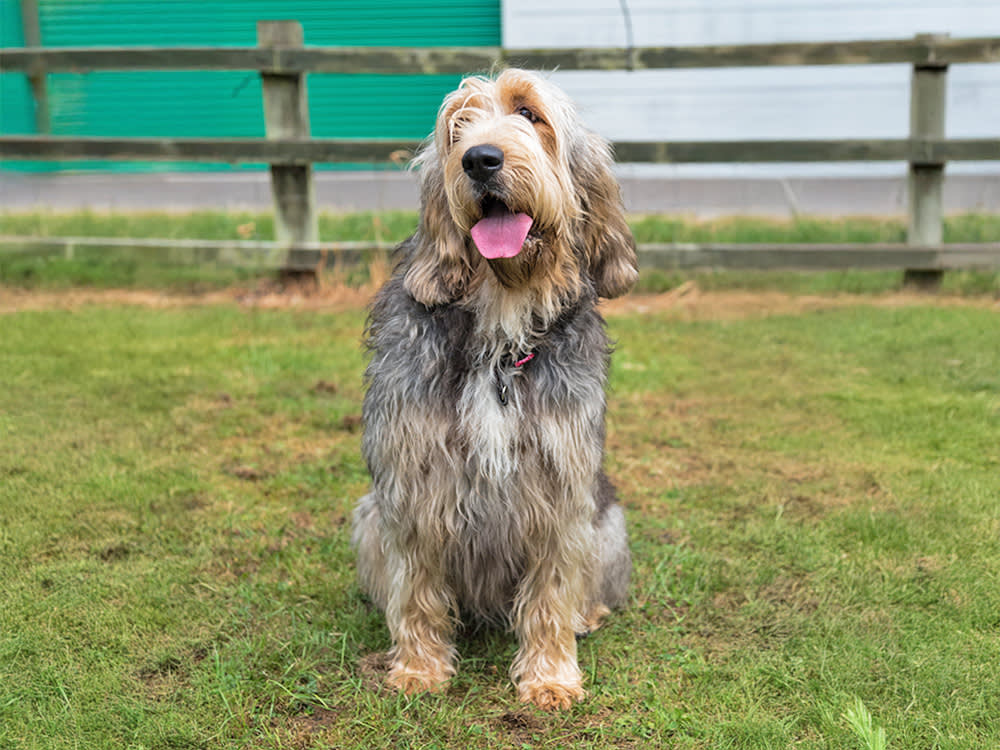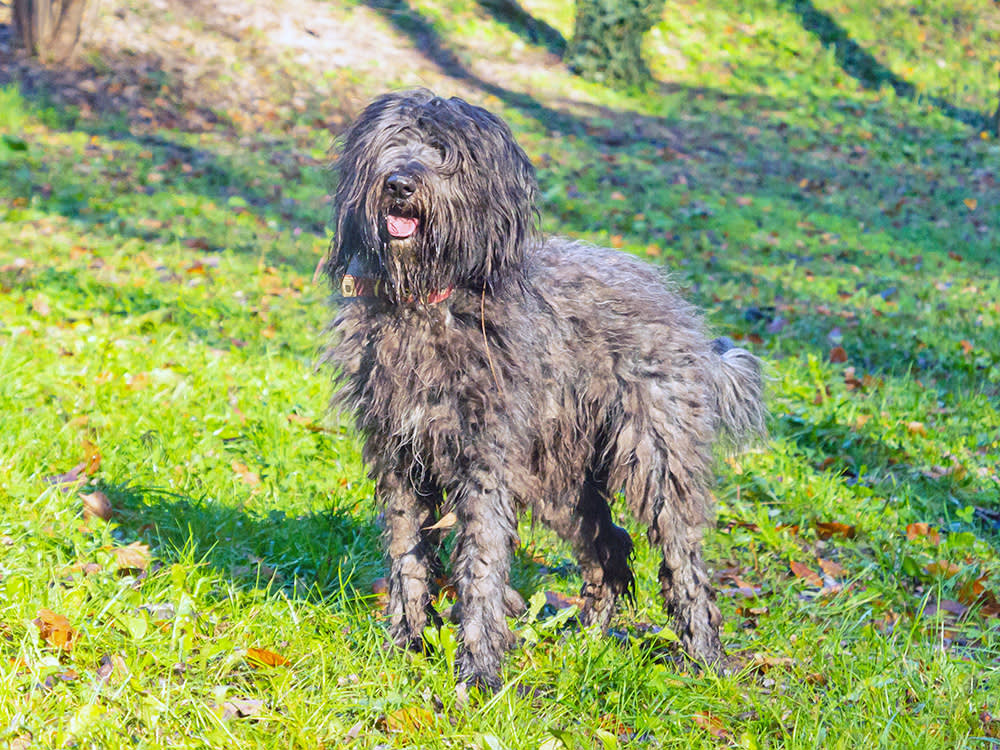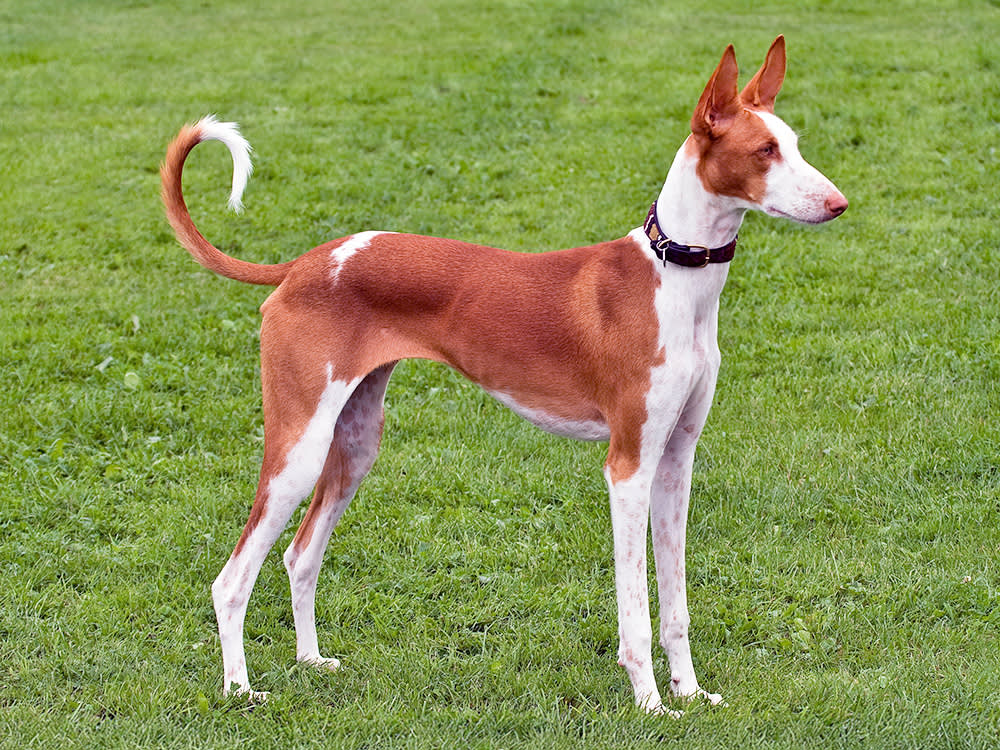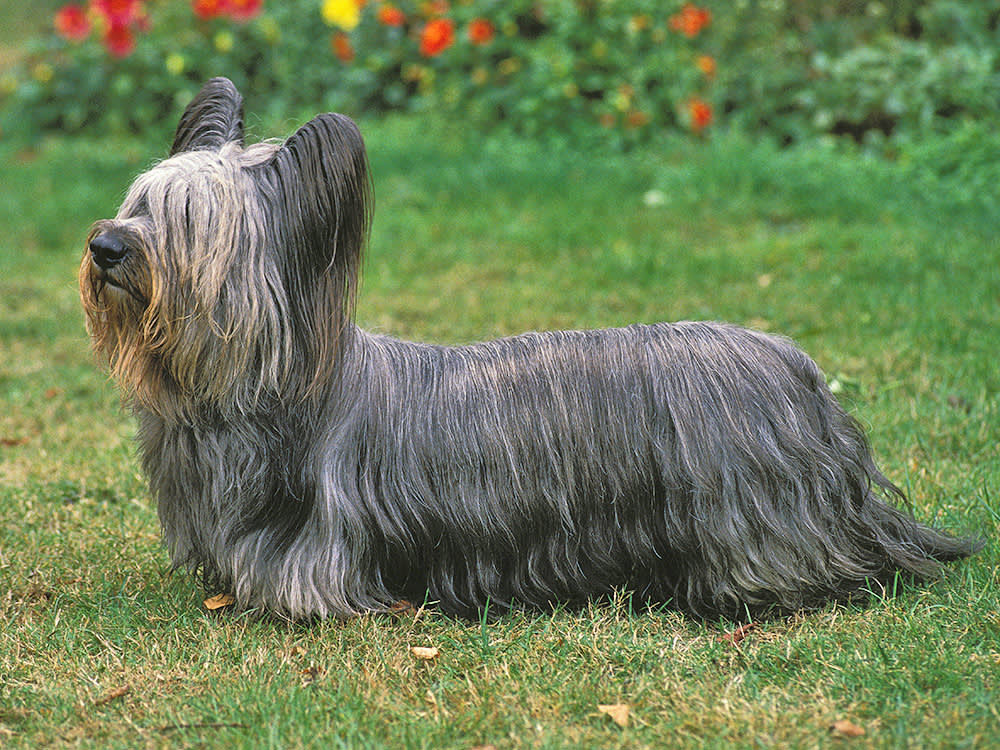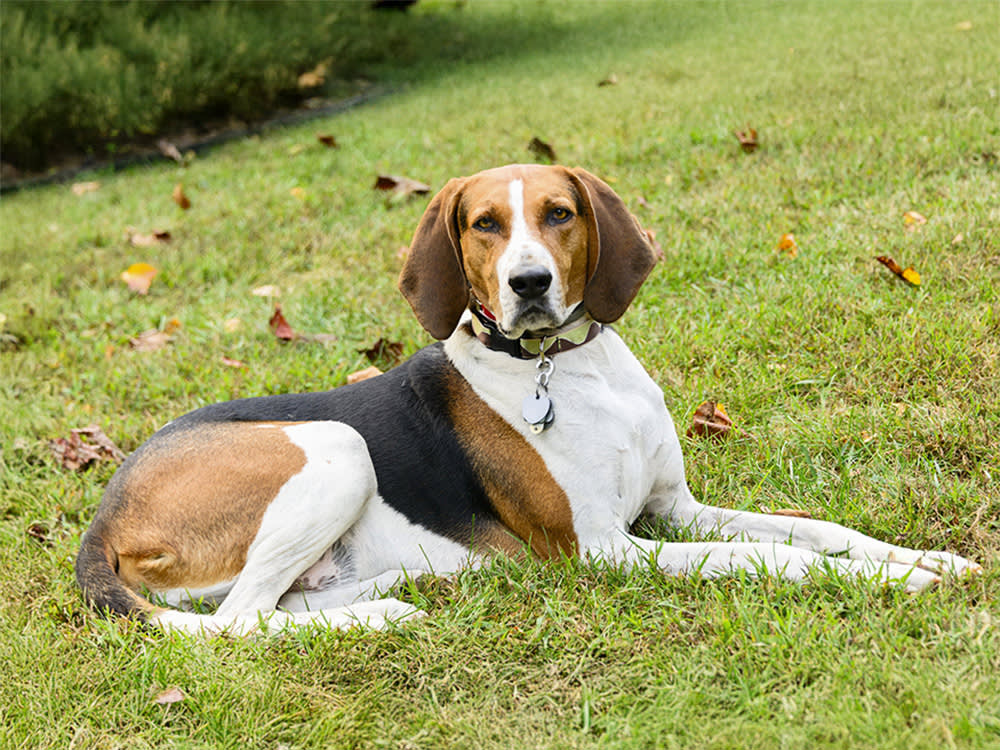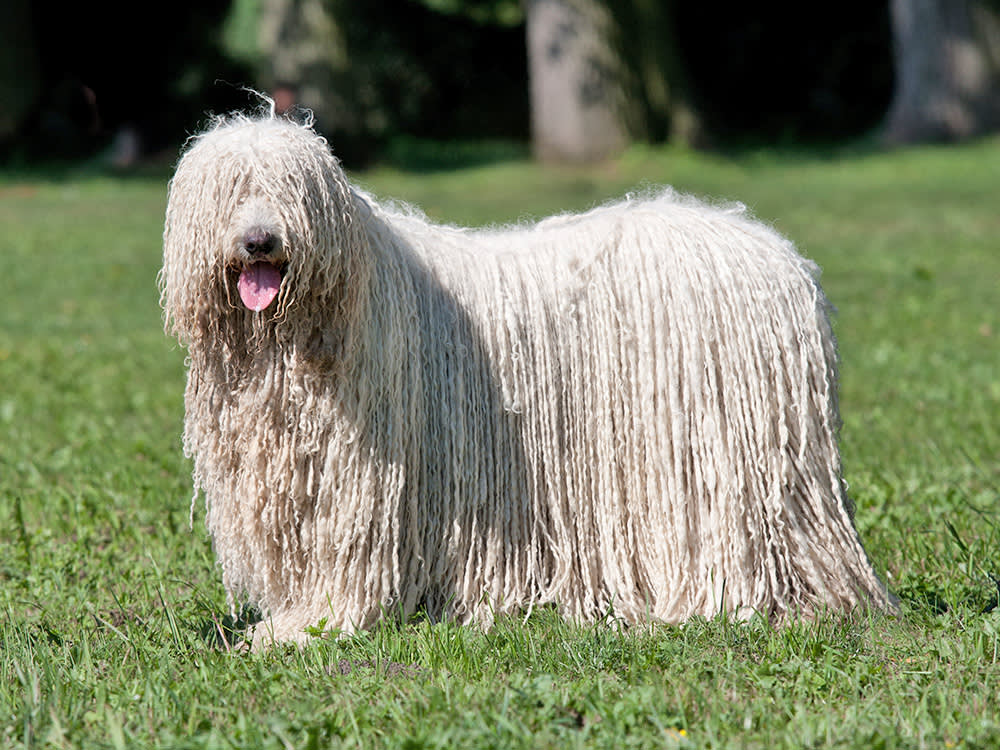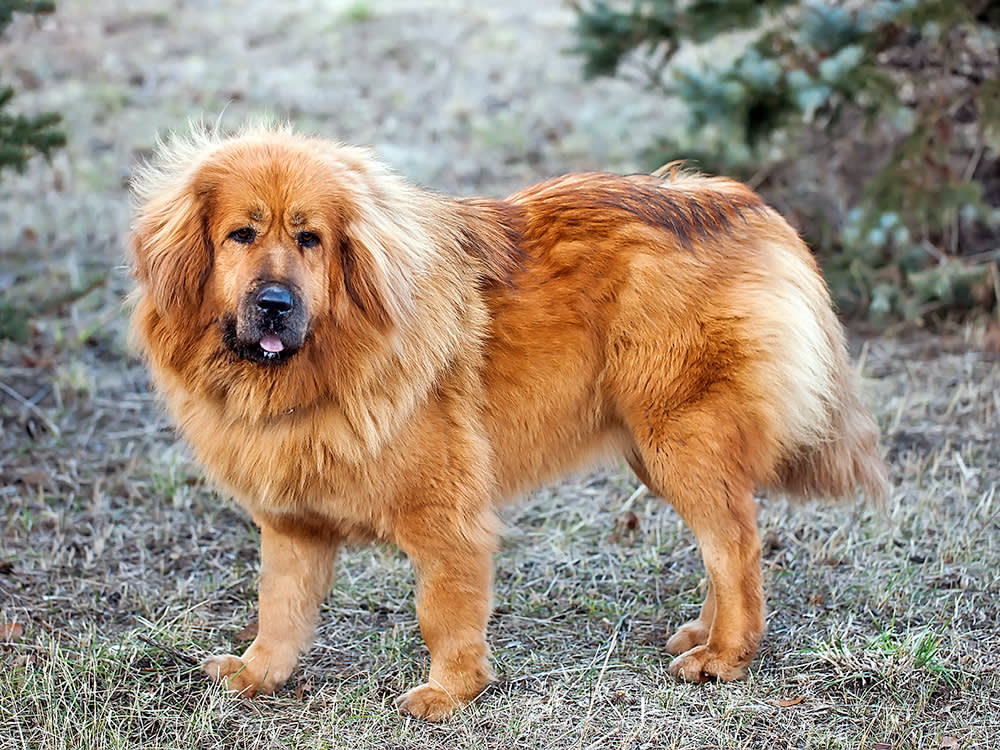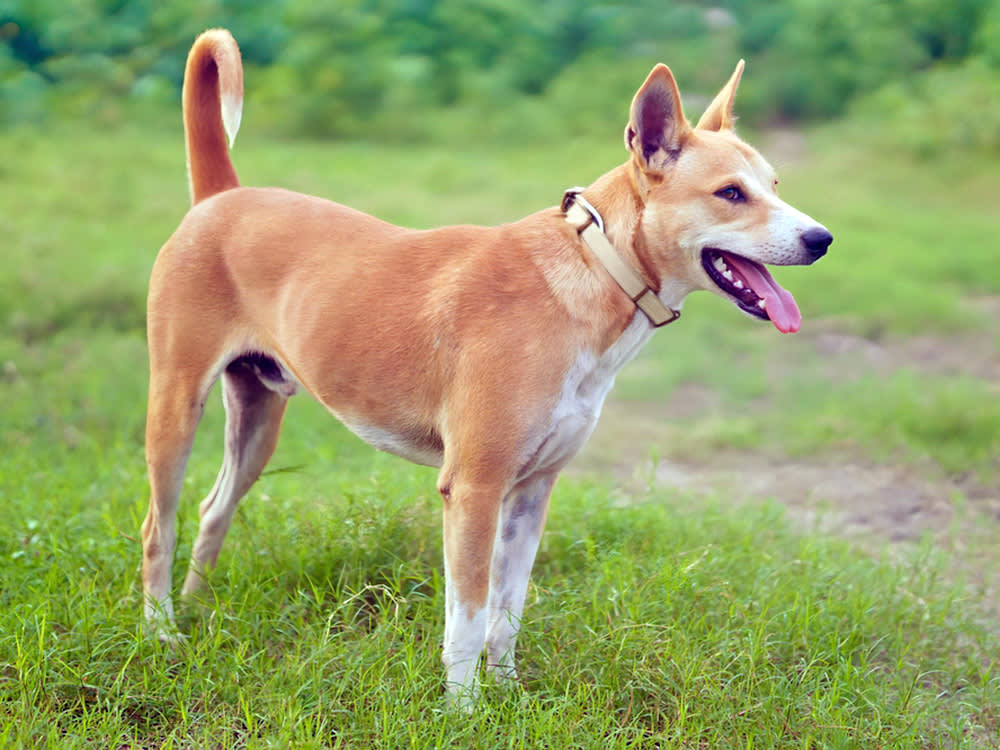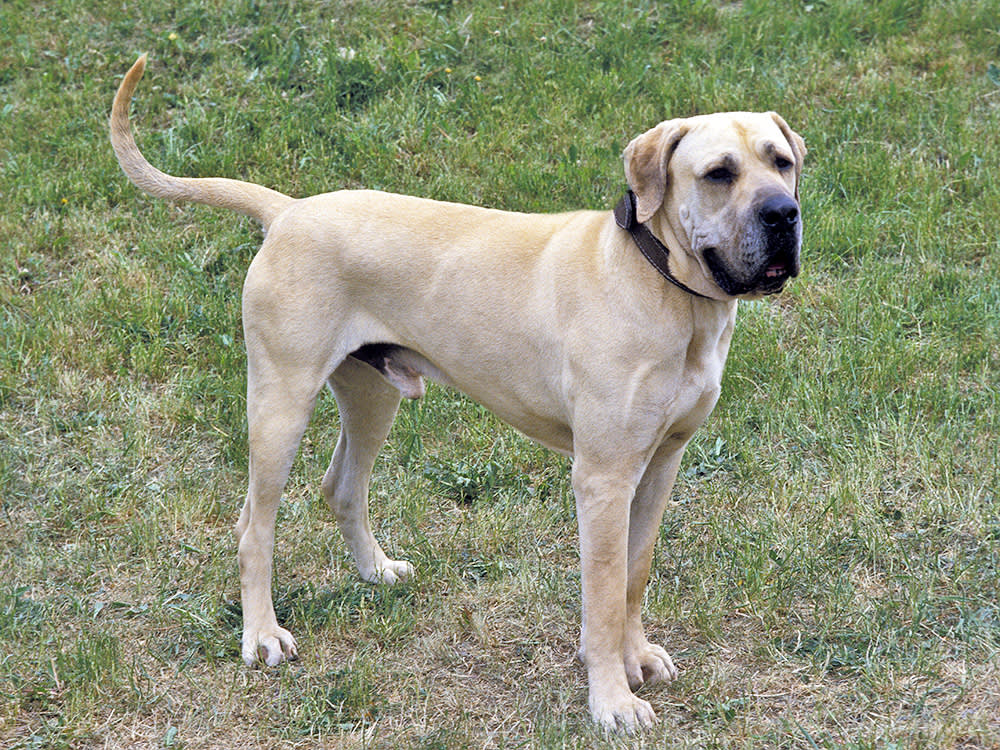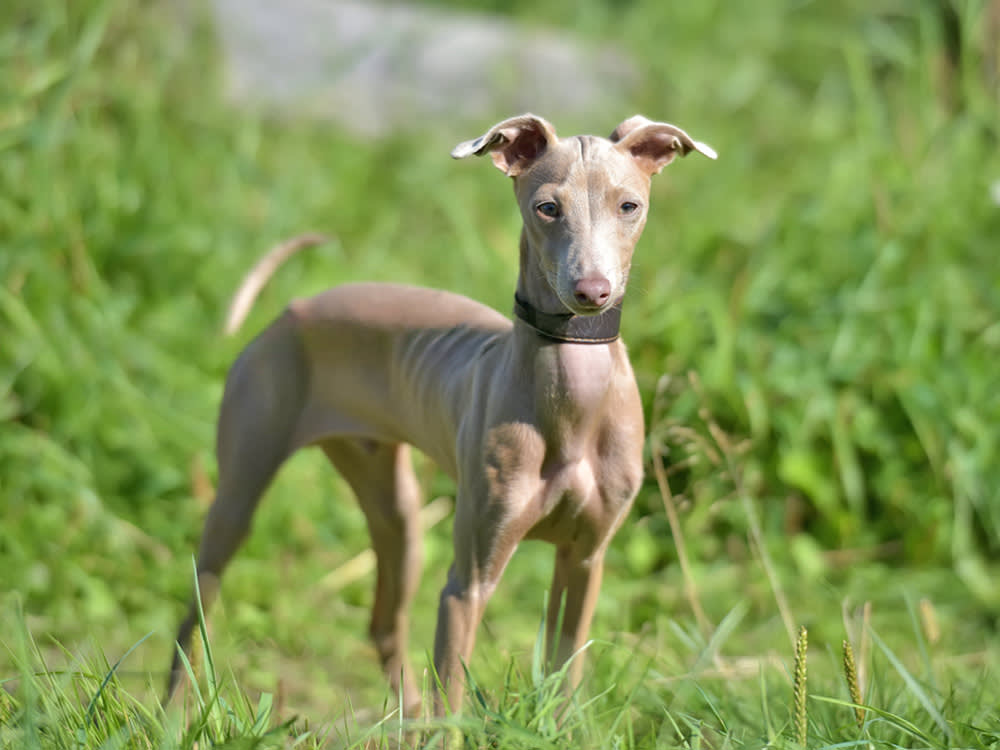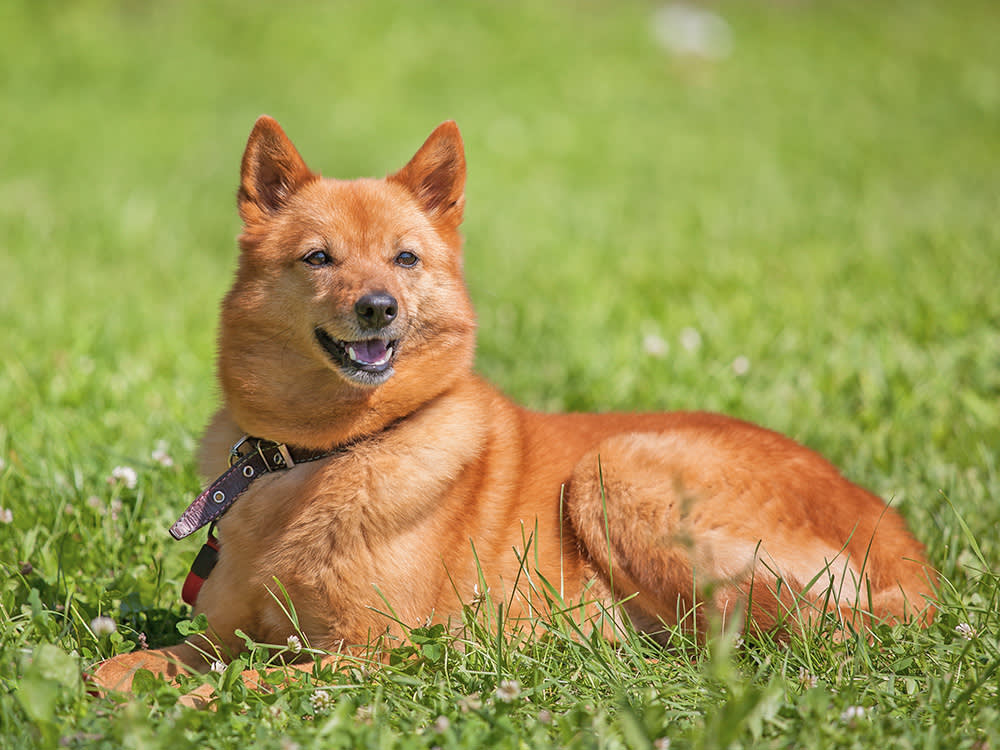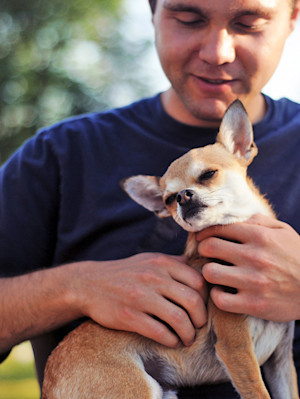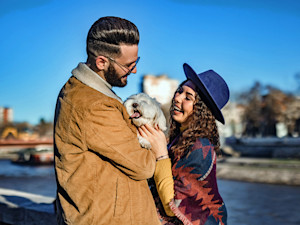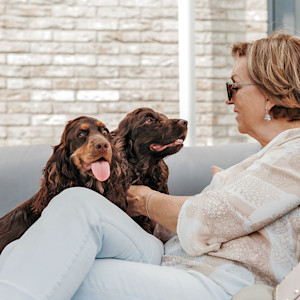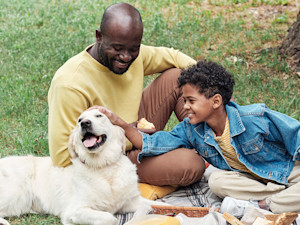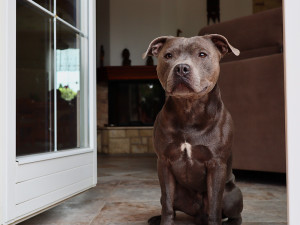15 Rare Dog Breeds You’ve Probably Never Heard Of
Bergamasco Sheepdog? Azawakh? Learn all about these unique pups.
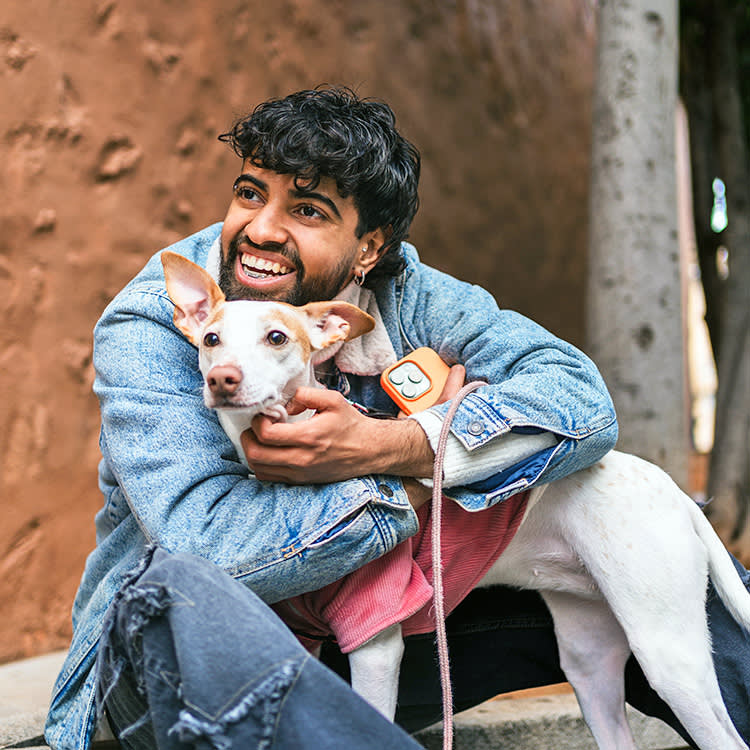
Share Article
In This Article:
What Is A Rare Dog Breed? Challenges Facing Rare Dog Breeds Notable Rare Dog Breeds Frequently Asked Questions
As cost of living rises and shelters fill up, you can find the perfect dog to adopt at many reputable rescues. There are mixes, purebred pups, even Goldendoodles rescued from unethical breeding situations. We always encourage folks to consider adopting, especially considering so many pups who are in need.
But as dog people, we have to admit: We are fascinated by all the kinds of pups who exist in the world, especially when their aesthetic is so... unique. Here, we explore 15 rare breeds that exist in the world — and what they look like.
What is a rare dog breed?
Dr. Julie Hunt, a veterinarian at Embrace Pet Insuranceopens in new tab, defines a rare dog breed as one with a limited global breeding pool, limited distribution in some or all parts of the world, and/or unique mental and physical characteristics or abilities.

Challenges facing rare dog breeds
The survival of rare breeds is directly related to the interest people have in continuing to breed and raise them. “At whatever point that interest wanes, these breeds are likely to cease to exist,” Hunt warns. Rare dog breeds are also challenged by a narrow gene pool. “This makes it difficult to continue breeding them without some degree of inbreeding, which intensifies any health problems that may be present in that small gene pool,” she adds.
Notable rare dog breeds
Some rare breeds have quirks, potential behavioral issues, and specific needs that need to be taken into great consideration.
Thai Ridgeback
The Thai Ridgeback is estimated to have originated in Thailand 3,000 years ago as a guard dog. It’s a medium-sized dog with a distinctive ridge of hair running down the center of their spine. Loyal, strong, intelligent and independent, the Thai Ridgeback requires ample early socialization and consistent training to ensure good behavior, Hunt says.
“Otherwise, their high energy and protective nature can create behavioral issues in the home. For this reason, they do best with experienced owners and homes that can offer regular exercise and training,” she says.
Azawakh
The Azawakh is a West African breed with long, elegant limbs and a lithe torso. It is the rarest of rare breeds, as there are only an estimated 1,000 Azawakh dogs in the world. The Azawakh was bred as a guard dog, so they’re naturally attentive and protective. “They can be good family dogs, as long as they have good early socialization and training,” Hunt says.
Sloughi
The Sloughi (sloo-ghee) or Arabian Greyhound, is a lean North African Greyhound bred for their hunting skills and speed over long distances. Like most Greyhounds, they are large-breed dogs with a short coat. Hunt says they have a quiet and gentle demeanor but require a significant amount of daily exercise between long naps, so a home with a fenced yard and time for long walks is important.
Norwegian Lundehund
If you’re bred to hunt puffins on cliffs, you have a remarkable degree of natural agility. The Norwegian Lundehund has six toes on each paw, ears that fold closed and a neck with a remarkable degree of mobility, all traits that improve its agility and protect it while doing their job, Hunt says.
“This dog is loyal, intelligent and easy to train but is prone to a serious genetic gut illness called Lundehund syndrome that causes diarrhea, vomiting and progressive weight loss,” she cautions.
Otterhound
You guessed it, the Otterhound was bred to hunt otters (an activity now outlawed in their native England). They’re a large breed with long hair and trace their lineage to medieval times. Because the Otterhound hunted in the water, their feet developed webbed toes and their hair has an oily coating to repel water. Their large black nose can follow an underwater scent trail over great distances. Otterhounds are intelligent, friendly and generally good family dogs, Hunt says.
Bergamasco Sheepdog
The Bergamasco Shepherd is a large herding dog that originates from Italy and develops a dreadlocked hair coat. Intelligent and loyal to humans and their “flock,” Hunt says, this breed can tolerate living indoors but requires mental stimulation and physical exercise. “They are great family dogs with calm and loving personalities as long as those needs are met,” she says.
Ibizan Hound
The Ibizan Hound is a long, lean Spanish sighthound once used for hunting. Ibizan hound are energetic, intelligent and affectionate. (Sighthounds hunt primarily by sight and speed unlike scent hounds that rely on scent and endurance.) Ibizan Hounds require significant daily exercise. They also have a high prey drive and the ability to jump tall fences. “They are sensitive, so positive training methods are preferred,” Hunt says.
Skye Terrier
The Skye Terrier is a small dog with short legs and a long silky coat that covers their body. They were bred on the Scottish Isle of Skye to hunt vermin (badgers and foxes). Today, the breed is one of the most endangered in the United Kingdom. Some people use them for ratting and scent tracking. “They have a strong prey drive and require good early socialization to manage their independent nature as they can be wary of strangers,” Hunt says.
American English Coonhound
American English Coonhounds are a happy, energetic breed with a distinctive baying voice. They also have very sharp noses and, once on a scent, they won’t be distracted. They require a lot of exercise but are sweet and happy dogs as long as their exercise needs are met.
Komondor
The Komondor is a distinctive-looking dog with kinky fur that forms long mop-like dreadlocks. Bred as herding dogs, Komondors are physically powerful, intelligent, and readily trainable if given a job. “This large breed is agile, active and devoted to its owner,” Hunt says.
Tibetan Mastiff
The Tibetan Mastiff is a large breed with a dense double coat to protect it from cold Tibetan winters. These dogs are intelligent and strong-willed, so good early socialization is necessary to prevent unwanted encounters with other people and animals, Hunt says. “[The Tibetan Mastiff] was bred as a protective dog, so it is wary of strangers and loyal to its family.”
Telomian
The Telomian is a Malaysian dog bred for protection. Telomians are known for their ability to climb the ladders of Malaysian jungle houses that are built on stilts and for their ability to hunt vermin such as rats and snakes. The Telomian are alert, intelligent, and loyal dogs.
Fila Brasiliero
The Fila Brasiliero, or Brazilian Mastiff, is a working dog bred for hunting, herding and guarding. They are not for casual dog owners. “This giant breed dog is strong and powerful, and it must be handled by an experienced owner — otherwise its strong protective instincts can make it a dangerous dog to own,” Hunt cautions.
Peruvian Inca Orchid
The Peruvian Inca Orchid is a breed as unique as their name. These dogs are noble and reserved, and while they’re a little wary of strangers, they’re very affectionate and loyal toward their humans. Like other sighthounds, they’re sensitive and intelligent dogs.
“This means they can learn new skills very well, especially if taught using gentle training methods,” Hunt says. “They are good family dogs, are generally calm in the home and require a moderate amount of daily exercise such as a daily walk or run in the yard.”
Finnish Spitz
The Finnish Spitz is a medium-sized dog from Finland distinguished by their fawn-colored coat and their upright, curly tail. Originally bred as a hunting dog, it has a high prey drive, may bark a lot, and has a high need for mental stimulation and physical exercise, making it unsuitable for living in small spaces. Hunt says this breed is loyal and intelligent, so it’s easy to train with positive, consistent reinforcement.
“The Finnish Spitz is best suited to an owner who can provide consistent training and room to run or significant exercise and mental stimulation,” she says.
Bottom line
Rare dog breeds offer a canine tour of the world and a fascinating perspective on how dogs were bred to meet their human companions’ need for food and protection. But owning a rare breed may come with extra responsibility and isn’t for everyone. Sadly, many rare dogs are purchased as controversial status pets. Some are wolf-hybrids restricted by insurance companies. They may not get their needs for exercise and mental stimulation met or they may be handled irresponsibly and become dangerous.
FAQs
What defines a dog breed as being “rare?”
Rare dog breeds have a limited global breeding pool, limited distribution in some or all parts of the world, and/or unique mental and physical characteristics, traits or abilities.
Are rare dog breeds more prone to health issues?
Yes, says Hunt. “The smaller gene pool makes them more prone to inherited genetic diseases that are common in their breed. This is the result of years of selected breeding within a limited gene pool.” Reputable breeders should be transparent about genetic diseases and willing to perform genetic testing.
Do rare dog breeds require special care or training?
They may or may not, depending on their temperament and needs. For example, says Hunt, a dog who’s bred to be hairless is going to require special skin care. It’s not necessarily because a dog is rare but because their breeding imparts strong instincts and needs that it requires intentional management and behavioral outlets. Their instincts may be stronger than those of more common breeds.
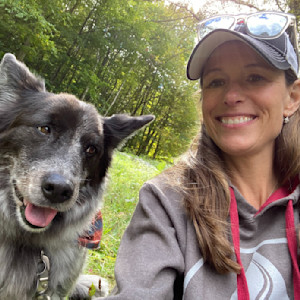
Catherine Fahy Green
Catherine Fahy Green is a journalist turned copy and content writer. As a pets writer, she focuses on and is fascinated by animal body language because there's so much to learn from and about animals by spending time in their presence and observing their physical cues.
Her work as a PR specialist appears in national trade media as press releases and stories about exciting new products people should try. She lives with her family in Western Massachusetts, where she listens closely to the stories her two dogs, flock of chickens, and four horses tell her. She spends her weekends at horse shows with her daughter.
Related articles
![Man hugging his cute Chihuahua dog.]()
10 Dog Breeds with the Longest Lifespans
Because we all wish our pets could live forever.
What are Low-Maintenance Dog Breeds for First-Time Pet Parents?
Any of these breeds are a great option for adoption.
![Couple smiling and holding their small fluffy dog.]()
Best Dog Breeds for First-Time Pet Parents
Please remember to look at shelters and purebred rescues for your dream pup.
![Two cocker spaniel dogs sitting on the garden sofa with a senior woman.]()
Best Dogs for Seniors: What Characteristics Match Your Lifestyle?
The right rescue pup is out there.
![Father and son have a picnic with their Lab dog.]()
The Best Dog Breeds for Families
Remember: You can find just about any breed you want at a rescue.
![restricted breed Staffordshire Bull Terrier stands in doorway of apartment rental]()
Why (Certain) Dog Breeds Are Not Allowed and How to Prepare For a Move With One
Insurance companies’ breed-restriction lists take a bite out of housing options
